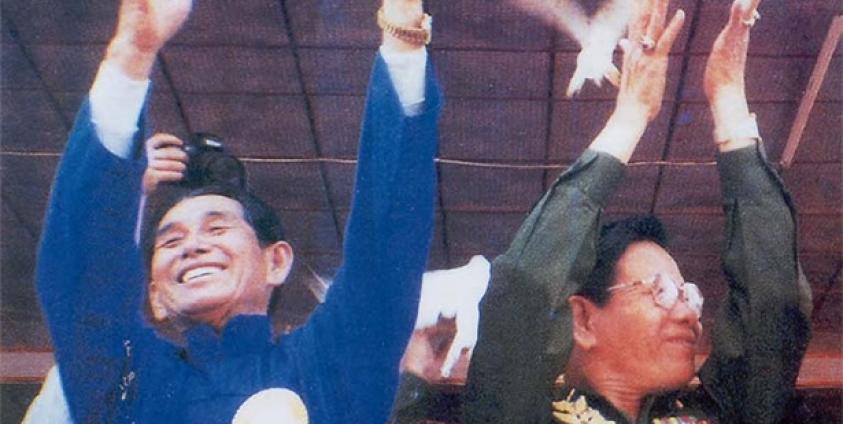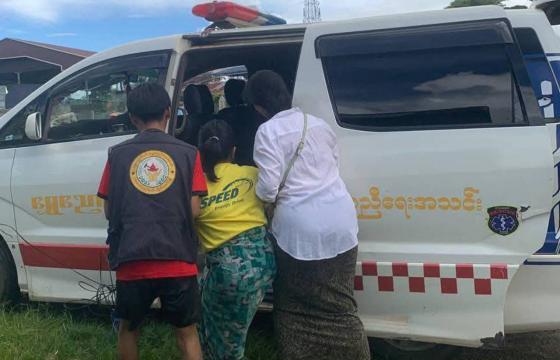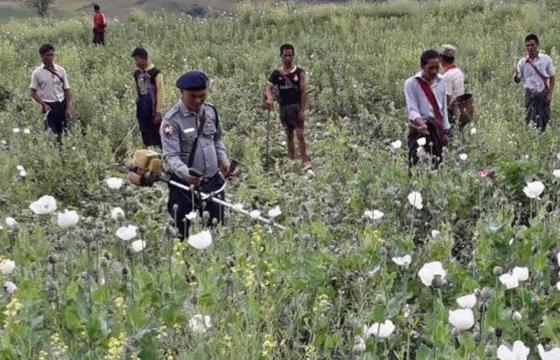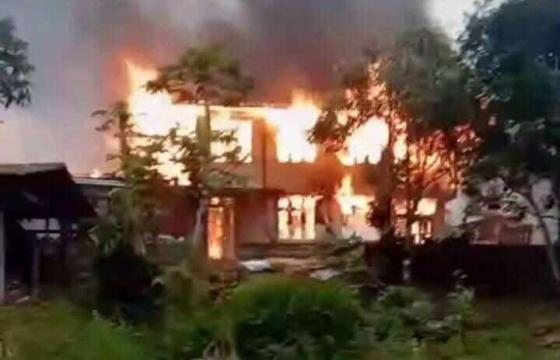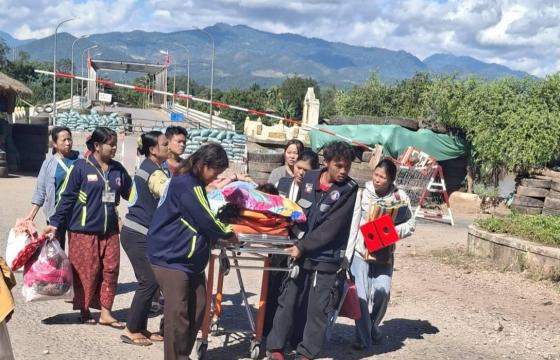The Transnational Institute (TNI), an Amsterdam-based international research and advocacy institute, last month released a 22 page briefing paper explaining the origins of the recent, ongoing fighting in Kokang State which began on 9 February.
According to a former Military Intelligence (MI) officer, whom the TNI interviewed, the conflict erupted because Peng Jiasheng (also written Pheung Kya-Shin) “feels cheated.”
In 1989, following the 18 September 1988 coup, which had followed the countrywide 8 August 1988 (later to be known as the Four 8’s) uprisings, the coup leaders were hard pressed by democratic activists in urban areas and armed rebels in rural areas. The strongest armed rebel group was the Communist Party of Burma (CPB). It was still a formidable force even though China had stopped giving them military support since Deng had come to power following Mao's death.
Peng, disillusioned both politically and militarily with the Burman-dominated CPB, had meanwhile “succeeded in convincing local commanders in the Kokang, Wa, Mongla and Kambaiti (Kachin) regions to join him in separating from the CPB.”
The Tatmadaw (Burma Army) responded quickly to their mutinies which began on 11 April 1989, offering ceasefires to the breakaway groups. “It took a huge burden off the Burmese military’s back,” the late Khun Sa of Mong Tai Army (MTA), who had refused to jump on the bandwagon, said at that time.
However, 15 years later, relations between Peng's Myanmar National Democratic Alliance Army (MNDAA) and the military government began to turn sour, with the unfolding of 4 events:
• The first was the arrest of Peng's mentor Gen Khin Nyunt and several other ceasefire groups, and the dismantling of the entire MI apparatus in 2004. “After the MI was abolished, Peng also lost his influence and main contacts in the government,” said the former MI officer.
• The second was the government’s unannounced change of policy toward the ceasefire groups. In 2005, Hso Ten, the head of the Shan State Army (SSA), was detained and given an unreasonable 106 year jail sentence for attempting to form a “Shan State Academics Consultative Council.” Later on units from Shan State National Army (SSNA) and the Palaung State Liberation Army (PSLA) were forced to surrender.
• Thirdly, their presentations to the National Convention (NC), ostensibly convened to lay down the principles for the new constitution, for the establishment of a federal union, were totally ignored when the 2008 charter was drafted and ratified by the military government led by Senior Gen Than Shwe.
• Fourthly, in April 2009, the government announced that all ceasefire groups were to transform into army-controlled “Border Guard Forces” (BGFs). As to be expected, most of them, including the MNDAA, immediately refused.
The military, then took advantage of a split in the MNDAA to make a surprise attack and seize control of the Kokang region. The rest is the recent history which began with the return of Peng in February.
TNI brushes aside the government’s statement about “protecting sovereignty and ensuring territorial integrity” against foreigners for its massive response to the Kokang situation. “During the same period they have also apparently allowed the India Army to conduct a cross-border raid into Myanmar’s Socialist Council of Nagaland-Khaplang faction (NSCN-K),” it reminds the readers.
This, according to TNI, suggests that the Tatmadaw has been practicing a “conflict management” rather than a “conflict resolution approach.”
The solution, TNI says, is not setting ceasefires as a precondition to start the political dialogue. “Peace in Myanmar needs to move from arguments about process to agreements about delivery.” It concludes: “In short, it is time to end military confrontations and to start political dialogue.”
Meanwhile, a Chinese scholar has charged the United States with having a role in the unrest in northeastern Burma.
Part of the abstract of his presentation to the International Conference on Burma/Myanmar Studies, 24-26 July, reads: “The current conflicts directly results from the US’s Asia pivot strategy to contain China, not only making China the victim of Myanmar’s domestic conflicts, but also seriously deteriorating China – Myanmar relations.”
If he is right, then a political dialogue between Naypyitaw and its discontented internal opposition will not be enough.
For the full briefing paper, please read Military Confrontation or Political Dialogue: Consequence, of the Kokong Crisis for Peace and Democracy in Myanmar, by the Transnational Institute (TNI) on its website.
Edited in English by Mark Inkey for BNI


